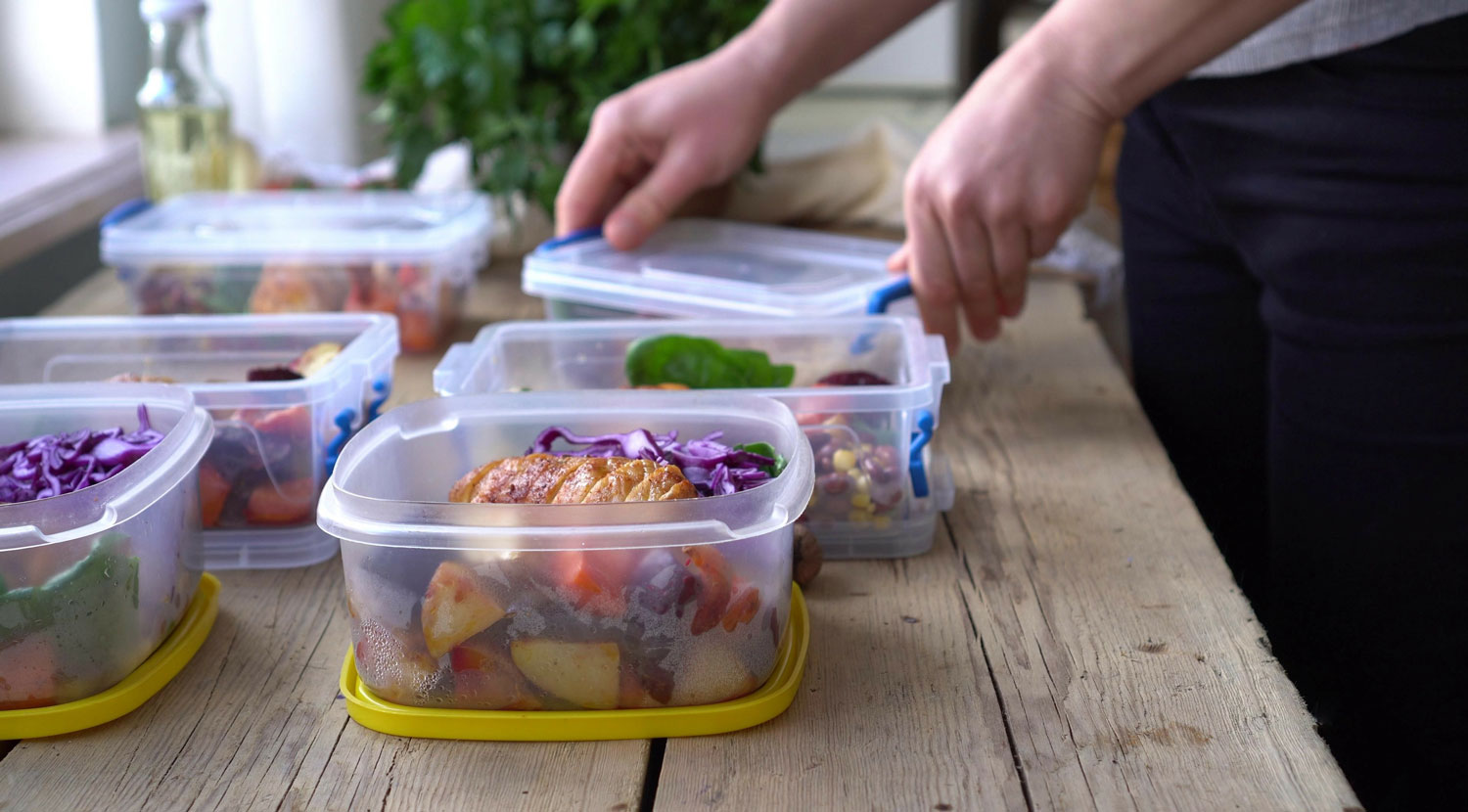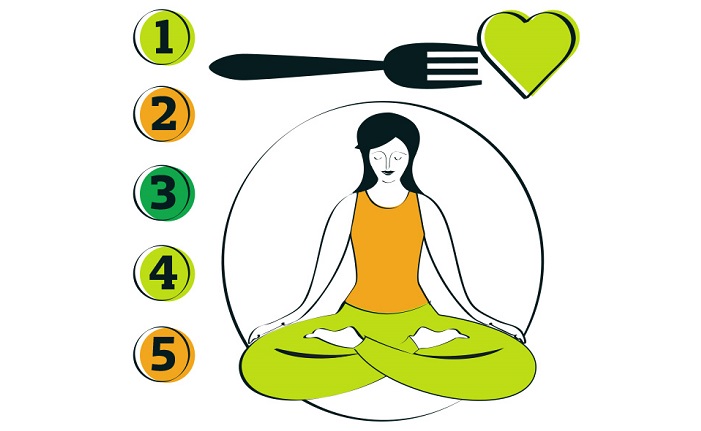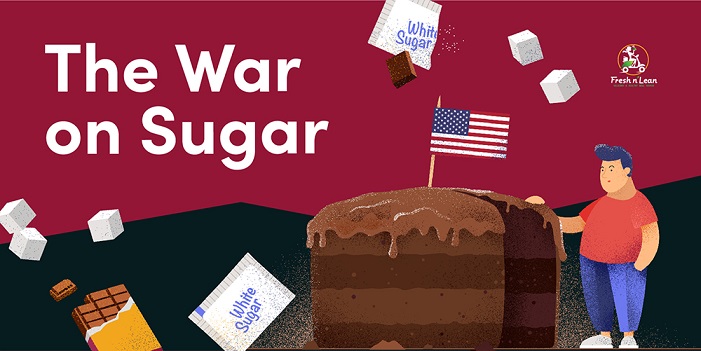SUMMARY
Junk food typically lacks fiber and micronutrients, and it’s high in calories. To break the junk food cycle, avoid foods with certain additives and preservatives, and opt for whole foods whenever possible.
When we take a look at stats regarding junk food, things don’t look too promising.
Here’s some of the scariest I recently stumbled upon:
- Fast food restaurants in America serve 50 million customers per day. That’s more than 15% of the population!
- On any given day, 34% of children between ages 2 & 19 consume junk food.
- The average American spends an estimated $1,200 on fast food each year.
- In 2015–2016, 39.8% adults and 18.5% youth were obese.
It seems that our search for faster-paced living and even faster food is beginning to catch up with us. When we started to prioritize flavor & speed of delivery over food quality & freshness, there was always going to be a trade-off (turns out it was our waistlines and heart health).
The good news is that all is not lost!
In this guide, we’re going to take a deep dive into all things processed and greasy. We’ll look at what junk food is, why it’s so appealing to us, and what we can do to break the vicious cycle and take back control.
Let’s take a look…
How Much Junk is in Your Junk Food
Are we in the midst of a junk-food-fuelled health crisis? Is it too late to turn things around? Junk food is a silent killer, waging war on your waistline & placing the health of the nation in jeopardy. Here’s how you can join the food revolution & take back control!
What is Junk Food?
The official definition defines junk foods as:
“Pre-prepared or packaged food that has low nutritional value.”
If we dig a little deeper…
Junk Food is Usually High in:
1. Empty Calories
Empty calories are essentially those with very little nutritional value. They provide energy to the body, but not much in the way of vitamins or minerals.
Regular over-consumption can cause an almost paradoxical dilemma – a combination of unintentional weight gain and nutrient deficiencies. Essentially, we become overfed but undernourished.
2. Unhealthy Fats
Junk food often contains inflammatory omega-6 rich vegetable oils and/or trans or hydrogenated fats. These have been shown to raise “bad” LDL cholesterol levels and potentially increase Cardiovascular disease risk. Heart disease is currently the number one cause of death in the US, killing 1 in 3 people.
3. Added Sugar + Refined Carbohydrates
Processed sugars spike blood glucose levels and lead to a big release of insulin into the bloodstream. If this happens on a regular basis, insulin resistance may occur, which can eventually lead to type 2 diabetes.
A staggering 1.5 million Americans are diagnosed with diabetes every year. In 2015, 30.3 million Americans, or 9.4% of the population, had the disease.
4. Sodium
Excess sodium in the diet increases water retention, and too much can increase blood pressure (hypertension). This contributes to an increased risk for heart disease.
About 1 in 3 U.S. adults (about 75 million people) have high blood pressure, and only about half (54%) of these people have their high blood pressure under control.
5. Additives + Artificial Ingredients
Junk food often contains artificial preservatives, colors, sweeteners, and flavorings to improve shelf life and alter taste. Various additives have been linked with everything from digestive issues to certain cancers.
Junk Food Usually Lacks:
1. Micronutrients
Junk food is notoriously lacking in vitamins, minerals, and antioxidants – needed to support just about every bodily function. As noted above, for the first time in history, we’re seeing a paradoxical nutritional deficiency in people who are also overweight or obese.
2. Dietary Fiber
Fiber is needed to support a healthy digestive system and slow down the absorption of sugars. Fast food is often void of both soluble and insoluble fiber.
It’s no wonder then that a 2013 survey showed that 74 percent of Americans are living with digestive symptoms like diarrhea, gas, bloating or abdominal pain.
3. Balanced Macros
In an ideal healthy meal, we’re shooting for a nice balance of complex, slow release carbs, healthy, omega-3 rich fat sources, and lean protein. In junk food, we rarely see this mix. Instead, it’s usually full of simple sugars, inflammation-promoting fats, and some protein. Satisfying on the taste buds, but doing nothing for our wellbeing.
The Junk Food Trap
If we know that junk food is not doing us any favors when it comes to living a healthy, active lifestyle, why does it still seem so alluring to so many of us? Here’s the lowdown:
1. Junk food plays to our senses
Our natural instinct as nomadic hunter-gatherers is to seek out high-calorie foods. Junk food manufacturers sneakily played on our built-in survival mechanism. They filled their foods with sugar, salt and fat, the perfect concoction to get our bodies wanting more!
2. It’s easy to access
Junk food requires minimal effort when it comes to meal prep. It’s usually inexpensive and more readily available than whole, natural foods. It also comes wrapped in bright packaging that’s appealing to the eye.
Add all these things together, and there’s no wonder you picked the Pop Tart over the salad – the decision is made subconsciously, before you’re even aware of it.
3. It leads to poor health
Poor nutrition is a strong behavioral risk factor for developing chronic diseases. As we touched on earlier, we get those big sugar spikes and energy dips. Raised insulin levels impact other hormones, can lead to fat storage, reduced energy levels, and poor sleep quality too.
All these factors add up and can potentially reduce activity levels, leading to more physical and mental health challenges. It’s a vicious cycle!
4. Enter the pleasure trap
Eating junk food on a regular basis can lead to cravings. This may be partly related to dopamine, a “pleasure” hormone in our brain that’s released in large amounts when eating junk foods (mainly due to sugar and processed ingredients).
Because your brain feels “rewarded” after eating junk food, you then crave more. The more junk food you eat, the more your tolerance builds towards dopamine, and the more you crave it. It’s scarily similar to the process of drug abuse and addiction…
Breaking the Junk Food Cycle
So how can we break out of the junk food cycle and regain control over our eating habits? Here are four simple steps you can start with today:
1. Opt for whole, unprocessed foods
Whether you cook at home or opt for a healthy food delivery, you’ll no doubt benefit from basing your diet around whole, natural produce with a short shelf life – packed with micronutrients, fiber and balanced macros.
2. Stay active
A combination of cardiovascular exercise and some form of resistance training supports overall wellbeing and can potentially make you crave healthier foods to refuel with.
3. Control stress levels
Sleeping well, meditating and confiding in others can help keep stress hormones low, potentially reducing food cravings.
4. Get your dopamine hit elsewhere
Learning new things, enjoying novel experiences, exercise and spending time with loved ones are all great, natural ways to substitute the dopamine hit you may crave from fast food.
3 Classic Examples of Junk Food
1. Processed Meat Stick (Original Flavor Giant Meat Stick, 28g)
- Nutrition: 140 kcal, 11 g total fat, 4g of saturated fat (20% of the DV-high), 480mg sodium (20% of the DV-high), 4g carbs, 6g protein.
- Contains: nitrites/nitrates, mechanically separated chicken (a puree that may include bone, skin, nerves & blood vessels), hydrolyzed soy protein – contains MSG (some people have a sensitivity to it) and may have chemical byproducts from manufacturing.
2. Donuts (Glazed Blueberry Donut, 1 donut)
- Nutrition: 340 kcal, 16g total fat, 7g saturated fat (35% of DV-high), 370mg sodium (16% of DV-moderate, but high for a dessert), 44g carbs, 22g sugar (assuming most are added, 44% DV-high), 4g protein
- Contains: Refined sugars and wheat flour, along with palm oil and artificial flavorings. The donuts are shipped to the stores, frozen and reheated – they are not fresh.
3. Canned Potato Chips (1.3 oz can-small, 37g)
- Nutrition: 200kcal, 12g total fat (15% DV), 3.5 g saturated fat (18% DV-high for a snack), 200 mg (9% DV), 21g carbs, 0g added sugar, 2g protein.
- Contains: Although there is no added sugar, the carbs sources are high GI (quickly spikes blood sugar) – such as dried potatoes, cornstarch, rice flour, maltodextrin, and wheat starch. If you get the big can and eat the whole thing, multiply each number by 4!
Hidden Junk Food Nasties
It’s not just the sugars, fats, carbs and calories to be mindful of in junk food. Often there are also a number of hidden nasties that are easy to miss. Here are some to watch out for:
The Wraps With a Bad Rep…
Fast foods and greasy carryout food often come in PFC (poly-fluorochemical) wrappers. PFCs are are also used in coatings in carpets, clothing, waterproof clothing, and nonstick/Teflon pans.
Exposure has been linked to a wide range of adverse health effects, including kidney and testicular cancer, high cholesterol, abnormal thyroid hormone levels, pregnancy-induced hypertension and preeclampsia, obesity and low birth weight. On top of all that, they’re usually not recyclable, so contribute to environmental issues.
Additives + Preservatives
Additives and preservatives increase the shelf life of food and prevent the growth of harmful bacteria. Sounds great, until we look at the potential side effects…
The research is a little fuzzy, but various compounds have been linked to increased risks for certain cancers and other health conditions. These typically occur with exposures of the additive/preservative higher than the values generally allowed in the food, or toward people with specific sensitivities/asthma. To be on the safe side, your best bet is to minimize them and instead consume more whole foods!
7 Common Additives to Look Out For in Junk Foods:
1. Potassium Bromate
A possible carcinogenic found in baked goods and other products on supermarket shelves. It’s typically added to flour to allow the dough to rise higher and have a white color.
Whilst the industry claims that it is fully converted to potassium bromide (safe) during baking, tests in the UK still detect it after baking. It’s banned in the UK and Canada, but the US still allows it to be added to flour.
2. Sodium Benzoate
Sodium benzoate is a food preservative/antifungal commonly used in processed foods and drinks to prevent spoilage. After ingestion, it is absorbed and excreted quickly. However, Sodium benzoate can trigger allergic reactions in some people.
Sodium benzoate can form benzene when combined with ascorbic acid (vitamin C), which is linked to increased risk for leukemia/blood cancers. The safe level of benzene for drinking water is only 5 parts per billion, but some sodas and beverages have been found to have 10-20 parts per billion!
3. Sodium Nitrate + Nitrite
Nitrate and nitrites help stabilize, color and flavor meat, and prevent harmful bacterial growth (especially Clostridium botulinum).
When heated at high temperatures, nitrosamine can form. Found in cigarette smoke, this is linked to pancreatic, ovarian, stomach, esophageal, thyroid and colorectal cancer risk. Not all cured meats contain detectable amounts of nitrosamines, but it usually is formed during high heat cooking such as frying (watch out for that bacon).
Nitrite can usually be excreted without harm, but if the body doesn’t have enough vitamin C, the nitrite can generate nitrosamines with the acidic environment of the stomach.
4. Sulfites
Sulfites occur naturally in many foods and are a byproduct of fermentation. They’re also added as preservatives in most wines, dried fruits, and other foods to increase shelf life.
People who are sensitive can experience adverse reactions, especially those with asthma because it can severely aggravate asthma.
5. Sulfur Dioxide
Sulfur dioxide is sometimes used as a preservative in dried fruits such as figs and apricots. It has antimicrobial properties that prevent rotting.
It affects human health when breathed in and may cause symptoms for people with sensitivity or asthma. It’s a gas that usually comes from industrial activities that process sulfur, such as electricity from coal, or oil and gas that contain sulfur, and is also present in motor vehicle emissions.
6. Propyl Paraben
Parabens are preservatives often found in beer, sauces, desserts, soda, processed fish, jams, pickles, frozen dairy products, processed veggies, and some cosmetics.
Whilst some studies have shown a potential link between parabens in cosmetics and breast cancer (the more woman that shaved underarms and used antiperspirants got breast cancer sooner), the evidence is inconclusive.
7. BHA and BHT (butylated hydroxyanisole and butylated hydroxytoluene)
BHA and BHT can be found in chips, vegetable oil, packaged sausage, and cereal/cookies. They’re used to prevents oils in foods from oxidizing and becoming rancid. The bad news is that they’re possible carcinogens in high doses, however, the evidence is mixed.
Kicking the Junk Food Habit
Education is one of the most important steps in making a positive change in life. Now you’re armed with all the knowledge you need about junk food, you can see where it applies to your own life, and maybe start to make some changes.
Remember:
It’s not about being perfect. You don’t have to ban certain foods altogether, or make huge changes overnight.
It’s about taking small, consistent steps towards healthier, whole food choices. What we see time and time again is that when we make this commitment and try our best to stick with it for the long-haul, the results for our health and wellbeing are overwhelmingly positive.
References
- Trans fat is double trouble for your heart health: https://www.mayoclinic.org/diseases-conditions/high-blood-cholesterol/in-depth/trans-fat/art-20046114
- Leukemia and Benzene: https://www.ncbi.nlm.nih.gov/pmc/articles/PMC3447593/
- Dietary Nitrates, Nitrites, and Nitrosamines Intake and the Risk of Gastric Cancer: A Meta-Analysis: https://www.ncbi.nlm.nih.gov/pmc/articles/PMC4690057/
- Junk-Food Facts: https://www.webmd.com/diet/features/junk-food-facts
- Dangerous Chemicals in Fast Food Other Than MSG: https://healthyeating.sfgate.com/dangerous-chemicals-fast-food-other-msg-12342.html
- Reasons Eating Junk Food Is Not Good: https://healthyeating.sfgate.com/reasons-eating-junk-food-not-good-3364.html
- Acrylamide and Cancer Risk: https://www.cancer.gov/about-cancer/causes-prevention/risk/diet/acrylamide-fact-sheet
- These Chemicals Are Keeping Your Food Fresh: https://www.huffpost.com/entry/these-chemicals-are-keepi_b_5766548
- 10 Similarities Between Sugar, Junk Food and Abusive Drugs: https://www.healthline.com/nutrition/10-similarities-between-junk-foods-and-drugs
- Nitrosamines: https://www.sciencedirect.com/topics/neuroscience/nitrosamines
- Many Fast Food Wrappers Still Coated In Pfcs, Kin To Carcinogenic Teflon Chemical: https://www.ewg.org/research/many-fast-food-wrappers-still-coated-pfcs-kin-carcinogenic-teflon-chemical
- The Truth About Potassium Bromate: https://www.livescience.com/36206-truth-potassium-bromate-food-additive.html
- Facts on Sodium Benzoate: https://www.livestrong.com/article/525531-facts-on-sodium-benzoate/
- The real risks of sulfites: https://www.consumerreports.org/cro/news/2010/06/the-real-risks-of-sulfites/index.htm
- Sulfur dioxide (SO2): http://www.environment.gov.au/protection/publications/factsheet-sulfur-dioxide-so2
- Are You Eating Parabens? http://www.herbhedgerow.co.uk/are-you-eating-parabens/
- The Truth About Food Additive BHA: https://www.livescience.com/36424-food-additive-bha-butylated-hydroxyanisole.html
- Two Preservatives to Avoid: http://www.berkeleywellness.com/healthy-eating/food-safety/article/two-preservatives-avoid
Fresh N Lean is the nation’s largest organic meal delivery service. Our tasty, chef-prepared cuisine is always fresh and never frozen, and we offer convenient meal plans like Protein+, Keto, Paleo, Standard Vegan and Mediterranean. Choose Fresh N Lean for affordable nutrition, delivered to your doorstep.





